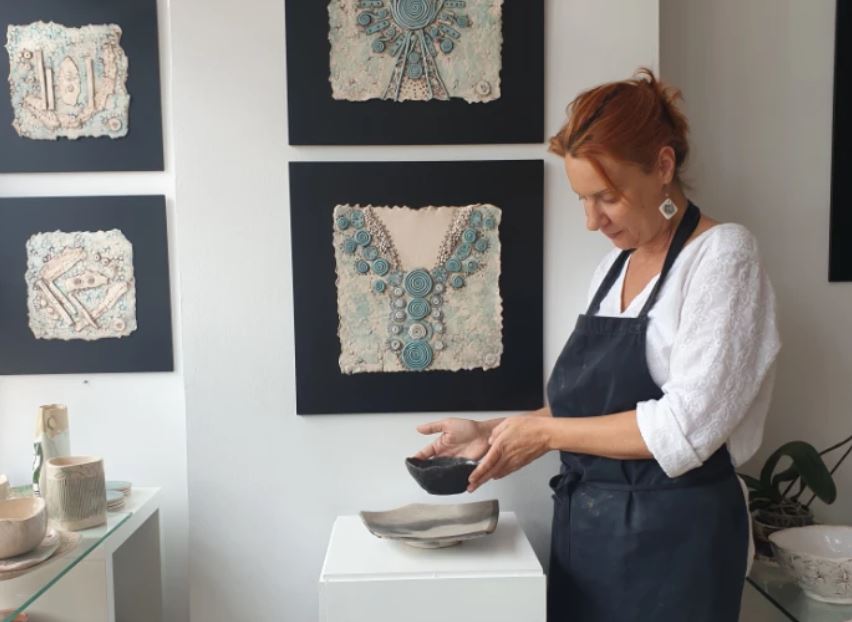Offer
Provide additional details about the offer you're running.
This store requires javascript to be enabled for some features to work correctly.

While studying painting at the Faculty of Arts at the University of Prishtina, Laura Sllamniku-Kryeziu would discover an additional passion. It was working with ceramics. She had gone to Tirana, to the Academy of Arts, to see if she could transfer her studies to the Sculpture Department, where she also studied working with ceramics. But she did not like the fact that she had to start her studies from scratch. She would get the best from the artist Fatmira Kuçuku. All this in 2003. She would return to Prishtina to complete her studies in painting and continue her art in ceramics. And this material, according to her, is the strong connection between art and craft.
She says that the process of creating a ceramic work is long. Now she does everything herself, from modeling to the realization of the artistic work. And in these works, details from the history, tradition and mythology of Kosovo are rarely missing, sometimes obvious and sometimes coded. The “raku” technique that she uses in her work, she says, is the crowning glory of ceramic art.
Returning to the origins
According to Laura Sllamniku-Kryeziu, what makes the connection between the art of ceramics and the craft is the material with which both are made.
“As the oldest medium treated in human history, it had its beginnings among ancient peoples in the first figurines made for various religious beliefs and rites. Then the treatment of clay for vessels, vases, plates, cups that would be used for their function brought about the so-called pottery,” she says.
And the treatment of clay in such a way that there are elements of art within the works, but that they do not necessarily have a function, according to Sllamniku-Kryeziu, makes it distinct from pottery...